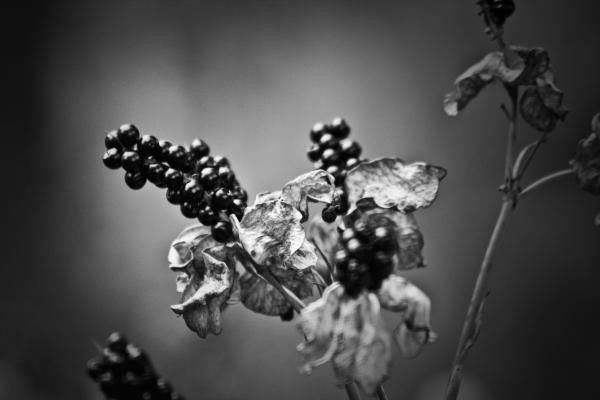
You may already know that smart plant selection is the single most important way to create a low-maintenance, high-enjoyment garden. We offer a list of top 5 sustainable plants, selected for their non-invasive habits, as well as their resistance to disease and insects. Once established, they require minimal watering and fertilization. Many of these plants are on display in the Outdoor Garden at Phipps Conservatory and Botanical Gardens. Also, look for the Project Green Heart tag at local nurseries.
1. Red Hot Poker
It is also called Kniphofia uvaria. A striking member of the lily family, sporting bright orange-red flower spikes on tall stems from late spring to early summer; attracts bees and butterflies. Green grassy, semi-evergreen arching foliage. Will form dense clumps, and grow to a height of 2â4′ and 1â2′ wide. Grows best in well-drained, average soil and part to full sun. You can find the Red Hot Poker at one of Phipps’ Recommended Local Nurseries. These plants produce spikes of upright, brightly-colored, red-to-orange flowers. This gives names such as “torch” and “red hot poker” to many of them. The flowers produce copious nectar while blooming and may attract sap-suckers such as hummingbirds and New World orioles.
2. Blackberry Lily
The dried rhizome has long been used in East Asia to treat throat troubles, asthma, swollen liver and spleen, gonorrhea, malaria, and arrow poisoning.[citation needed] The leopard lily is a flowering perennial of Chinese origin and is locally used in Chinese villages for its medicinal values. Currently, studies are underway to investigate its apparent potential against prostate cancer. The plant grows 60â90 cm tall in full sun and is often found blanketing hill sides, the flowers can range from red to yellow to orange or mixed and bloom in summer to early autumn (fall). The leaves grow in a fan, like those of a gladiolus. The flowers are typically orange spotted with red, although yellow-flowered varieties are in cultivation. The seed pods open in the fall, showing clusters of black seeds whose fancied resemblance to a blackberry gives the plant its common name, “blackberry lily.” The plant is hardy to USDA plant hardiness zone 5 and is propagated by seeds or division.
3. Lenten Rose
Commonly known as Hellebores, members of the genus Helleborus comprise approximately 20 species of herbaceous perennial flowering plants in the family Ranunculaceae, within which it gave its name to the tribe of Helleboreae. Many species are poisonous. The flowers have five “petals” (actually sepals) surrounding a ring of small, cup-like nectaries (petals modified to hold nectar). The sepals do not fall as petals would, but remain on the plant, sometimes for many months. Recent research in Spain suggests that the persistent calyx contributes to the development of the seeds (Herrera 2005). Although the flowers of some species may resemble wild roses (and despite some of their common names, such as “Christmas rose” and “Lenten rose”), hellebores do not belong to the rose family (Rosaceae).
4. Virginia Sweetspire
Itea virginica (Virginia sweetspire) is a plant in the Iteaceae. Iteaceae is a flowering plant family of trees and shrubs native to the eastern USA, south eastern Africa, and south and southeastern Asia. Some older taxonomic systems place the genera in this family in the Grossulariaceae. The APG III system of 2009 includes the former Pterostemonaceae in Iteaceae. The family is known from fossil flowers dating to the Turonian age of the Late Cretaceous that have been found in the Raritan Formation, New Jersey and from leaves dating to the Eocene found in the Klondike Mountain Formation, Washington. I. virginica is actually a shrub with alternate, simple leaves, on arching stems. The flowers are white, borne in summer. It has deciduous to semi-evergreen shrub and grows from 3′ to 6′ tall. It is a multi-stemmed, suckering and colonizing plant. The stems branch infrequently except at the tops.
5. Oakleaf Hydrangea
Hydrangea quercifolia, commonly known by its translation Oakleaf hydrangea, is a species of hydrangea native to the Southeastern United States, in woodland habitats from North Carolina west to Tennessee, and south to Florida and Louisiana. Hydrangea quercifolia is a coarse-textured deciduous shrub growing to 8 meters (26 ft) tall with an open crown. The plant sprouts shoots from underground stolons and often grows in colonies. Young stems are covered in a felt-like light brown bark, and the larger stems have attractive cinnamon-tan-orange bark that shreds and peels in thin flakes. The leaves are yellowish green to dark green on top and silvery-white underneath. They have three, five or seven pointed lobes and are 4â12 in (10.2â30.5 cm) long and almost as wide. They are larger versions some oak leaves, resembling Quercus species with lobed foliage. Plants in shade have larger leaves than those grown in sun. Hydrangea quercifolia leaves turn rich shades of red, bronze and purple in autumn that persist in winter accompanying the persistent dried flower-heads.




